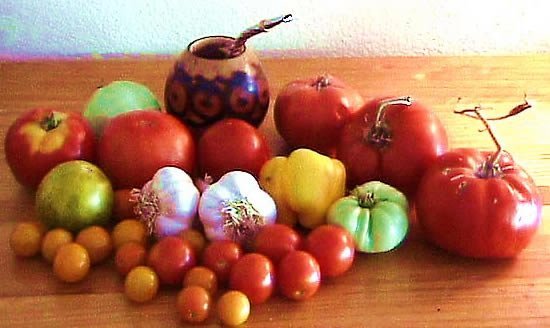About Seed Saving

Gardening catalogs full of heirloom seeds abound, and during growing season, it’s not unusual to find Brandywine or Green Zebra tomato and Deer Tongue lettuce seedlings at the local nursery. More and more gardeners are attempting to collect pure seeds from these plants at the end of the season.
Seed Saving wasn’t always a hobby – for most of the history of civilization (including, most likely, that of your immediate ancestors) it was necessity.
Because the United States is a nation of immigrants, there is a rich history of crop diversity here. In this blog, we’ve only just begun to explore the astonishing varieties of bean. Consider that at one point, most crops had that diversity. Even now, for every fruit, vegetable, herb and seed you see in grocery store displays, someone, somewhere, is keeping an heirloom variety of it alive.
Our country’s ancestors raised generation after generation of plants, carefully selecting the best. When they immigrated, the seeds came too. Often smuggled in, sown into hems and hatbands and suitcase linings, these seeds took on central importance to the people who carried them here. They were their means of survival yes, but also a living thread keeping them connected to home.
When we save seeds, we are taking this history into our own hands. Literally, holding a seed is holding a story that stretches back, sometimes centuries. It’s a story that conjures up over-the-fence seed swaps. It’s a story that speaks to beating the odds, to adaptation and evolution, to finding a niche and holding on tight, just the way a bean tendril does. Seeds also speak of the future, of those untold, unfolded stories, the ones that you and I are shaping this very moment.
Back to top
The definition of an heirloom is hard to pin down. Both Seed Saver’s Exchange and Baker Creek Heirloom Seeds agree that there must be a history attached to it, that it must have been passed down through the generations.
The number of years that a variety must be grown before it can be considered an heirloom is a matter of debate, but most sources say at least 50 years. Stricter definitions designate 1951 as the cut-off, when the first commercially developed hybrids were introduced.
Regardless of the age though, “non-hybrid” is a non-negotiable defining characteristic of heirlooms. They are open-pollinated, which means these seeds come from plants that were pollinated by wind or by insect rather than by human design. This is an important distinction, because much of the time, hybrid seeds are unable to reproduce. Sometimes the seeds of hybrids are sterile – when planted, nothing happens. Or they come up as weak, spindly plants that don’t set fruit. In the cases where the seeds do grow into full plants that bear vegetables and produce their own seeds, after one season the plants will revert back to the qualities of whichever parent plant had the dominant genes.
So, heirloom plants are “pure’, in that they don’t represent a mixture of two different varieties. And because they can naturally reproduce, the heartiest, most acclimated varieties are the ones that have survived over time, which means they are most suited to withstand the pestilence and climate conditions of the region where they evolved, the very conditions that wiped out other crops.
Heirloom advocates often point to the great potato famine. In the 1840s, though crops were not regularly crossbred, there was a monoculture of potatoes growing in Ireland. When the potato blight set in, it was able to destroy the country’s food supply because all the potatoes were of the same stock, and none of them had a genetic makeup that could withstand the disease.
Saving the old varieties is more than just an exercise in nostalgia and culinary adventure. Diversity is nature’s survival wild card.
